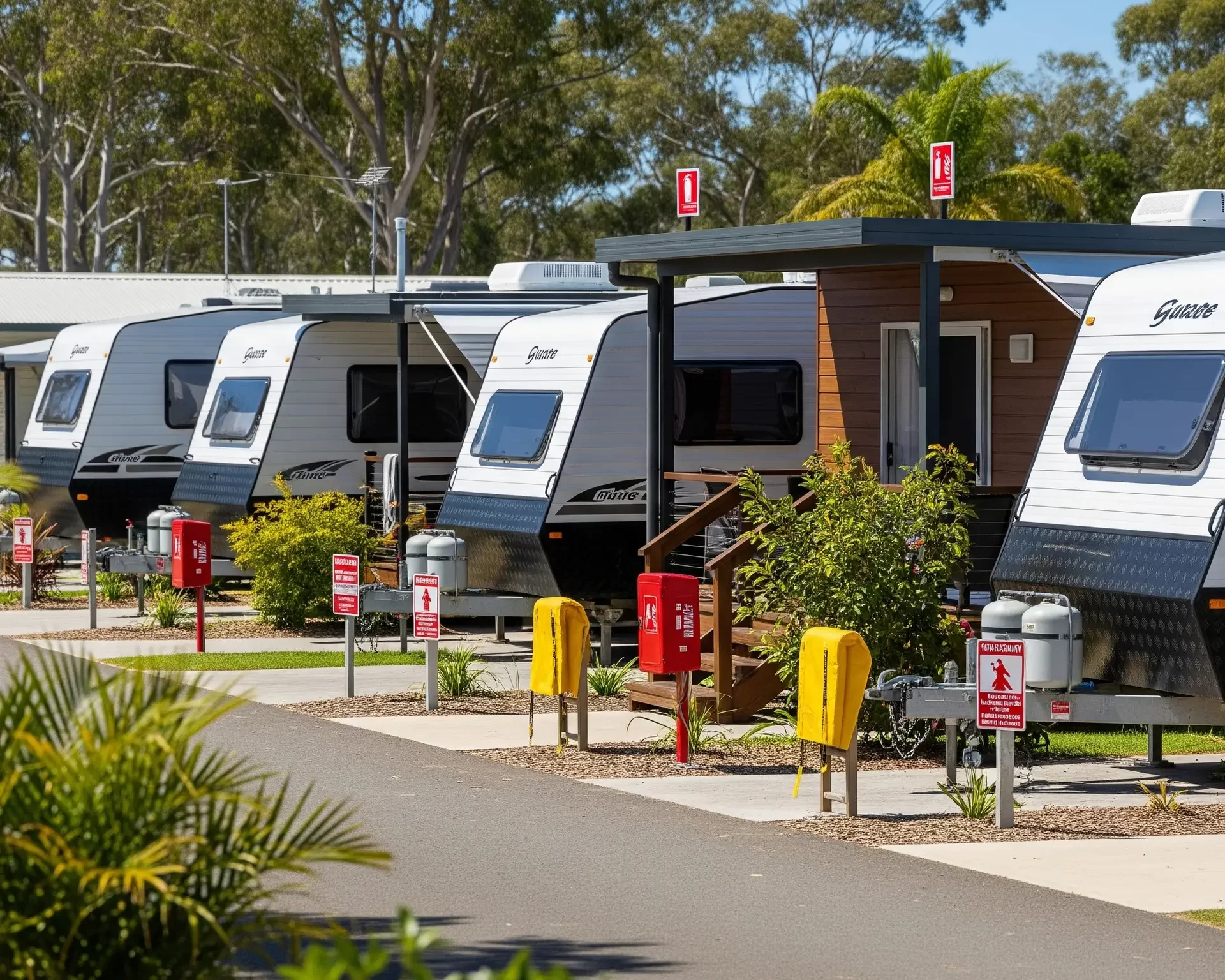Why Fire Separation Matters
The Gold Coast, as a premium worldwide holiday destination, is home to many caravan, tourist and relocatable home parks. However, these parks by definition incorporate a high concentration of closely spaced dwellings. Inadequate spacing between these structures in combination with a lack of fire protection measures between adjacent units can significantly increase the risk of fire spread between dwellings, placing property and occupants at risk.
What the Regulations Say
Tourist parks, particularly those which support caravans, are often perceived not to fall under the National Construction Code. However, once a caravan or similar structure functioning as a dwelling becomes a permanent residency, it can be considered to fall under the definition of a ‘Class 1a’ building by relevant approval bodies.
For Class 1a buildings, the National Construction Code (NCC) Volume 2, Part H3 and Australian Building Construction Board (ABCB) Housing Provisions Part 9.2 requires either of the following:
- Minimum separation distance from the external wall to the allotment boundary of 0.9m (900mm) and;
- Minimum separation distance between external walls of adjacent buildings of 1.8m (1800mm); or
Where the separation distances stated above cannot be achieved, fire rated external walls achieving an FRL of 60/60/60 are specified to protect neighbouring buildings and structures.
Common Fire Safety Issues Identified
Achieving adequate fire separation protection either through separation distances remains a prevalent and pressing issue across caravan parks, many of which feature established homes and structures with long term residents. Achieving ongoing compliance with building codes is further challenged by ;
- Insufficient awareness by tenants and site management of regulatory requirements and compliance support
- Unauthorised and non-compliant additions (e.g. carports, awnings) to existing dwellings not subject to formal building approval processes
- Use of combustible and lightweight materials in lieu of fire-rated construction between buildings.
Sotera’s Expertise
At SOTERA, we have over a decade of experience in applying our fire engineering expertise on behalf of tenants, owners and management bodies of Class 1a buildings. Our performance solutions provide assurance of code-compliant fire separation for both new and existing caravan parks, while minimising disruption and impact on existing structures, equipment and occupiers.

